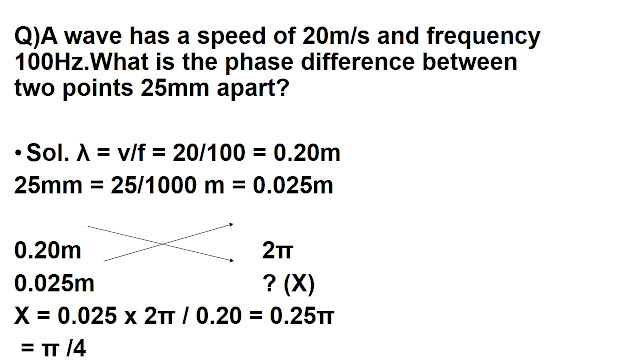Q)Define a wave.
Wave is a disturbance that
actually carries energy from one point
to another with out the actual transfer
of matter from one point to another
http://www.acs.psu.edu/drussell/Demos/waves/wavemotion.html
Differentiate between Transverse waves and longitudinal waves
Transverse Waves
|
Longitudinal Waves
|
The particles in the medium vibrate
perpendicular to the direction of the wave velocity. (direction of energy propagation).
|
The particles in the medium vibrate
parallel to the direction of the wave velocity (direction of energy propagation).
|
Consists of crests
and troughs
|
Consists of
compressions and rarefactions
|
Eg. Radio waves,
light
|
Sound waves
|
Ans. A
WAVE PROPERTIES
1. Displacement-
(x)The distance to any point on the wave from
the mean position at any point of time.
2.Amplitude (A) – Maximum displacement of particle of the medium from its equilibrium
point. The bigger the amplitude, the
more energy the wave carries.
3. Wavelength – Distance between two consecutive
crests or two consecutive troughs.
4.Period (T) – Time taken by consecutive crests (or
troughs) to pass a given point, i.e., the time required for one full cycle of
the wave to pass by.
Time
Period is the reciprocal of frequency: T = 1 / f.
5.Frequency (f ) – The number of cycles crossing a
point in
one second OR
The number of crests (troughs) crossing a
point in one second
The SI unit for frequency is the Hertz
(Hz), which is one cycle per second.
Energy
α Amplitude2
http://www.school-for-champions.com/science/waves.htm#.Vp8UBlklkmw
QB1)
QB7)
https://www.youtube.com/watch?v=yKL6DjqAm3I
https://www.youtube.com/watch?v=6_C8KyU67RU
QUESTION BANK













































No comments:
Post a Comment